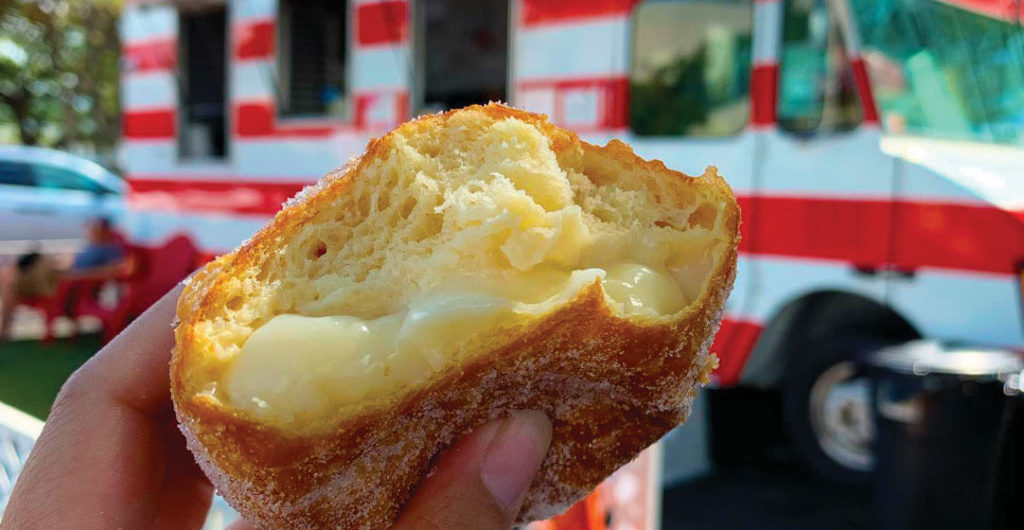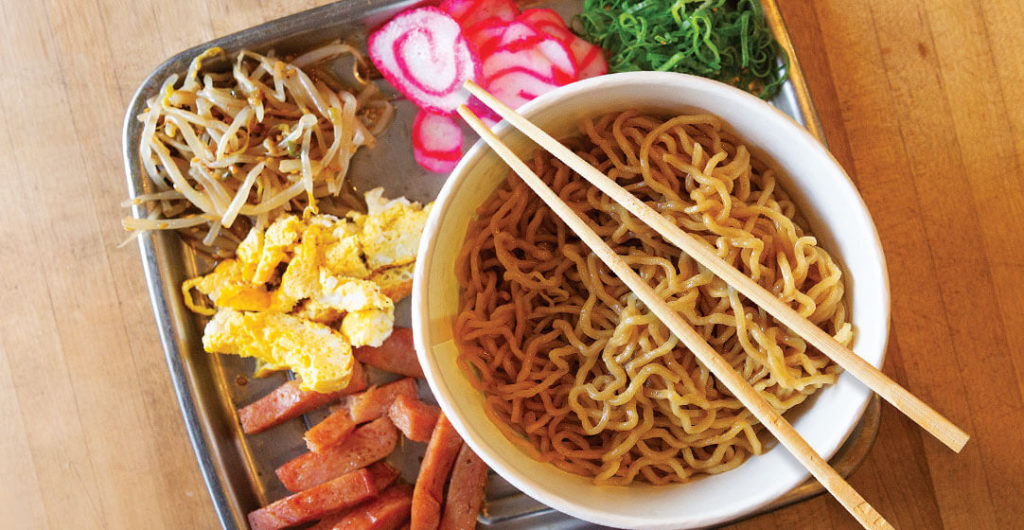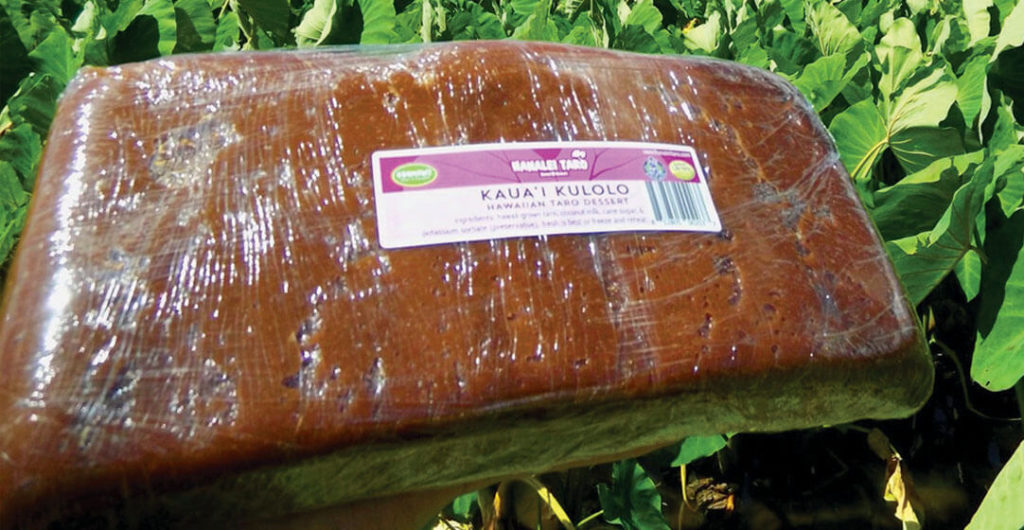Taste the Best Foods of Hawaiʻi
What could be better than lounging on a pristine stretch of sand in Hawaiʻi ? How about lounging there while indulging in a box of delectable malasadas or a plate of soul-satisfying loco moco?
Most travelers are drawn to Hawaiʻi by its miles of beaches and its breathtaking natural beauty, but many of them come away with a deep love for the food of the Islands. Hawaiʻi’s unique cuisine is a blend of diverse cultural influences, many dating from the 19th century plantation era. It’s the blending that makes the culinary magic.
“Everyone says how Hawaiʻi food is a smorgasbord of different ethnic dishes, which is true, but the most iconic dishes are not specific to any single ethnic group,” says Arnold Hiura, the Big Island-based author of Kau Kau: Cuisine & Culture in the Hawaiian Islands. “Spam, loco moco, chicken hekka — they are all representative of Hawaiʻi’s mixed local culture.”
A classic example is saimin, a noodle dish similar to ramen that came about when immigrant plantation workers combined Chinese-style egg noodles with local ingredients and their cooking know-how from back home. The result, now enjoyed with gusto across the Islands, is part Chinese, part Korean, part Japanese — and 100% local.
Spam musubi is another popular mashup. It dates from the World War II era, when grocery stores relied heavily on canned foods, including Spam. Japanese Americans combined it with teriyaki sauce and rice and wrapped it in nori (seaweed) to create a dish that’s beloved to this day.
Here are six more iconic foods of Hawaiʻi, along with one classic cocktail. Each has its own origin story with roots in a specific island.

Oʻahu Specialties
1. Malasada
These deep-fried, sugar-dusted, yeast-leavened doughnuts hail from Portugal, arriving in Hawaiʻi in the 19th century with plantation workers from the Madeira and Azores islands. Like Mardi Gras’ famous king cake, malasadas are a sweet, rich indulgence traditionally eaten in the days leading up to Lent. (In Hawaiʻi, Mardi Gras is known as Malasada Day.) Family-run Leonard’s Bakery, opened on Oʻahu in 1952 and now in its third generation, was the first shop in Hawaiʻi to serve the fried-dough treats. Along with the original variety, Leonard’s sells malasadas coated in cinnamon sugar and filled with flavored cremes, including chocolate, coconut and guava.
WHERE TO GET IT: Leonard’s may be the most popular place in Hawaiʻi to get malasadas, but Agnes’ Portuguese Bake Shop, in Kailua on Oʻahu’s Windward Side, has a diehard following. The original shop shuttered in 2018 after nearly 50 years in business, but it was reborn in 2020 as a food truck. Agnes’ hews closely to tradition, forming malasadas by hand and frying them to order.
2. Manapua
A variation on the Chinese char siu bao, manapua are chewy buns filled with meat — usually sweetened roast pork — or veggies and then steamed, baked or occasionally fried. Chinese immigrants brought bao to Hawaiʻi in the 19th century; there are two theories as to the origin of their Hawaiʻi name — it comes from either a shortened form of mea ʻono puaʻa, which translates as “Chinese pork cake,” or mauna puaʻa, meaning “mountain of pork.”
The buns were sold by street peddlers nicknamed “manapua men,” who were once so ubiquitous that they became an enduring local icon. While char siu pork is still the most popular filling, shops today also serve variations filled with kālua pig (the lūʻau pork staple), pork adobo, Portuguese sausage and Okinawan sweet potato. And you’ll be hard-pressed to find manapua on other islands. “It’s definitely an Oʻahu thing,” says Honolulu-based food blogger Melissa Chang. “I will buy a box and take it to other islands when I visit.”
WHERE TO GET IT: Chang craves the manapua from Sing Cheong Yuan Bakery in Honolulu’s Chinatown. “It’s sweet, salty, carb-y and good any time of day,” she says. “Sing Cheong Yuan’s bun-to-meat ratio is good, and both the bun and the meat are delicious.”
3. Mai Tai
The mai tai is Hawaiʻi’s classic cocktail — it’s the perfect accompaniment to a glorious sunset. Victor “Trader Vic” Bergeron, who created the original mai tai in 1944, brought the drink — a mix of rums, orgeat, pineapple juice, simple syrup and orange Curaçao liqueur—to the Islands in 1953, where it was first served at the Royal Hawaiian Hotel in Waikīkī. It’s still the trademark cocktail at the hotel’s Mai Tai Bar.
WHERE TO GET IT: The mai tai at the Royal Hawaiian is the original, but the version poured at the Halekūlani’s House Without a Key restaurant and bar uses a combination of high-quality rums and fresh lime juice—instead of pineapple—to create a delightful alternative take. Plus, you can’t beat the ambiance, sitting under the famous banyan tree and listening to live music of Hawaiʻi as you watch the sun go down.
House Without a Key’s Signature Mai Tai Courtesy of the Halekūlani
Ingredients
- 1/3 ounce orgeat syrup
- 1/3 ounce Curaçao
- 1/3 ounce rock candy syrup
- 1 1/4 ounce fresh lime juice
- 3/4 ounce Bacardi Gold rum
- 3/4 ounce Bacardi Select rum
- 1/2 ounce Lemon Hart 151 rum (for float)
Method
- Pour orgeat syrup, Curaçao, rock candy syrup, lime juice, Bacardi Gold and Bacardi Select into glass.
- Pack with crushed ice.
- Float Lemon Hart 151 rum.
- Garnish with lime wheel, sugarcane stick, mint leaf and vanda orchid.

Treats of Maui
4. Guri Guri
Guri guri is a sweet treat unique to Maui. Somewhere between sherbet and ice cream, it comes in fruit flavors and includes condensed milk, but its full recipe is a closely guarded secret of the Tasaka family, proprietors of Tasaka Guri Guri Shop in Kahului. They’ve been selling guri guri for more than 100 years, and their current shop at the Maui Mall has been in business since 1973. The origin of the name? It was originally sold to plantation laborers as “goodie-goodie,” which the Japanese workers pronounced “guri guri.”
WHERE TO GET IT: There’s only one place to get guri guri, and that’s at the shop that invented it. Tasaka Guri Guri Shop is a tiny mom-and-pop operation where you can get the frozen treat in paper cups or in quarts well suited for transport between islands.
5. Dry Mein
Dry mein is a one-of-a-kind noodle dish that originated on Maui. As the name suggests, the seasoned noodles are served dry. They’re topped with char siu pork, bean sprouts and chopped green onions and come with a bowl of savory broth that diners either pour over the chewy noodles, dip the noodles into or sip on its own. It’s likely the dish was first made at Sam Sato’s in Wailuku, an unassuming old-time restaurant that opened in 1933 and started serving dry mein sometime in the ’60s. The story goes it was dreamed up by one of the kitchen’s Chinese cooks. It’s now the restaurant’s bestseller.
WHERE TO GET IT: Tin Roof in Wailuku serves a more modern dry mein than the classic Sam Sato version. Helmed by “Top Chef” alum Sheldon Simeon, the small takeout eatery tops its noodles with Spam, fried egg, kamaboko (fish cake), green onions and bean sprouts.

A Hawaiian island Staple
6. Loco Moco
A beef patty, white rice, a fried egg and brown gravy are the core ingredients of loco moco, Hawaiʻi’s quintessential comfort food. Legend has it that loco moco originated in Hilo in the late 1940s when a group of hungry teenagers dropped in to their favorite hangout, the now-long-gone Lincoln Grill, looking for something cheap, filling and delicious. They asked the owner to put a hamburger and a fried egg on a bed of rice and then smother the whole thing with gravy. From those humble beginnings loco moco has gone on to become a fixture, with many variations, on menus all over Hawaiʻi, from old-school drive-ins to high-end restaurants.
WHERE TO GET IT: Opened in 1949, Café 100 in Hilo calls itself the “home of the loco moco.” It has the most varieties to choose from—more than a dozen, including unique takes incorporating Spam, grilled fish, bacon and chili.

Kauaʻi cuisine
7. Kūlolo
It makes sense that Kauaʻi, home to farms that grow more than two-thirds of all the taro in Hawaiʻi, also produces the best kūlolo. Kūlolo is a dense pudding made from mashed taro, coconut milk and sugar, mixed together and baked. The result is stiffer than poi (the traditional taro paste) and can be sliced into squares like fudge. Although kūlolo is found on every island, fresh-from-the-farm taro makes Kauaʻi’s version a standout.
WHERE TO GET IT: The sixth-generation family-run W.T. Haraguchi Farm, located near Hanalei, operates Hanalei Taro, a food truck featuring dishes made from their taro, including some of the most popular kūlolo on the island. They also sell kūlolo online and ship it anywhere in the U.S. Proceeds support the Hoʻopulapula Haraguchi Rice Mill, a nonprofit agrarian museum housed in Hawaiʻi’s last remaining historic rice mill.
– Written by Catherine Toth Fox, last updated in October 2022.
– Top Image is House Without a Key’s Signature Mai Tai courtesy of the Halekūlani
– This article originally appeared in the November/December 2021 edition of AAA Washington’s member magazine, Journey.









